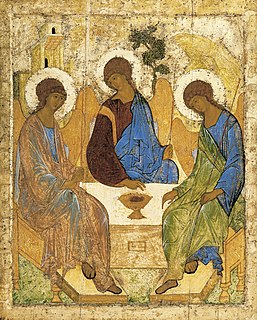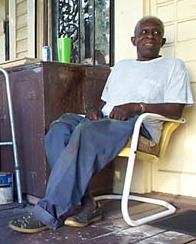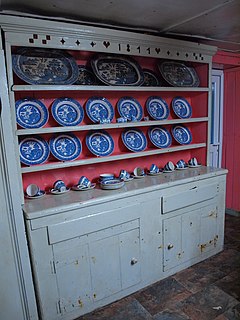
Furniture refers to movable objects intended to support various human activities such as seating, eating (tables), storing items, eating and/or working with an item, and sleeping. Furniture is also used to hold objects at a convenient height for work, or to store things. Furniture can be a product of design and can be considered a form of decorative art. In addition to furniture's functional role, it can serve a symbolic or religious purpose. It can be made from a vast multitude of materials, including metal, plastic, and wood. Furniture can be made using a variety of woodworking joints which often reflects the local culture.

Lacquerware are objects decoratively covered with lacquer. Lacquerware includes small or large containers, tableware, a variety of small objects carried by people, and larger objects such as furniture and even coffins painted with lacquer. Before lacquering, the surface is sometimes painted with pictures, inlaid with shell and other materials, or carved. The lacquer can be dusted with gold or silver and given further decorative treatments.

Rose-painting, rosemaling, rosemåling or rosmålning is a Scandinavian decorative folk painting that flourished from the 1700s to the mid-19th century, particularly in Norway. In Sweden, rose-painting began to be called dalmålning, c. 1901, for the region where it had been most popular and kurbitsmålning (kurbits), in the 1920s, for a characteristic trait, but in Norway the old name still predominates beside terms for local variants. Rose-painting was used to decorate church walls and ceilings. It then spread to wooden items commonly used in daily life, such as ale bowls, stools, chairs, cupboards, boxes, and trunks. Using stylized ornamentation made up of fantasy flowers, scrollwork, fine line work, flowing patterns and sometimes geometric elements give rose-painting its unique feel. Some paintings may include landscapes and architectural elements. Rose-painting also utilizes other decorative painting techniques such as glazing, spattering, marbleizing, manipulating the paint with the fingers or other objects. Regional styles of rose-painting developed, and some varied only slightly from others, while others may be noticeably distinct.

Japanning is a type of finish that originated as a European imitation of East Asian lacquerwork. It was first used on furniture, but was later much used on small items in metal. The word originated in the 17th century. American work, with the exception of the carriage and early automobile industries, is more often called toleware.

Khokhloma or Khokhloma painting is the name of a Russian wood painting handicraft style and national ornament, known for its curved and vivid mostly flower, berry and leaf patterns. Often Firebird, the figure from the Russian fairytale, is also depicted.
The term tôle, derived from the French tôlepeinte, "painted sheet metal", is synonymous in English usage with japanning on tin, such as the tôle shades for bouilotte lamps and other candle shades, and trays and lidded canisters, in which stenciling and gilding often features, almost always on a black ground. Pontypool and Usk in South Wales made a reputation for tôle imitating Japanese lacquer starting in the early 19th century.

Zhostovo painting is an old Russian folk handicraft of painting on metal trays, which still exists in a village of Zhostovo in the Moscow Oblast. It appeared in the early 19th century mainly under the influence of the Ural handicraft of flower painting on metal. Subsequent development of the Zhostovo painting handicraft was stylistically related to porcelain and enamel painting techniques, used by factories near Moscow, flower motifs on printed cotton, produced by the Ivanovo factories, and Lukutin miniature.

The use and making of icons entered Ancient Rus' following its conversion to Orthodox Christianity in AD 988. As a general rule, these icons strictly followed models and formulas hallowed by Byzantine art, led from the capital in Constantinople. As time passed, the Russians widened the vocabulary of types and styles far beyond anything found elsewhere in the Orthodox world.

In woodworking and the decorative arts, refinishing refers to the act of repairing or reapplying the wood finishing on an object. In practice, this may apply to the paint or wood finish top coat, lacquer or varnish. The artisan or restorer is traditionally aiming for an improved or restored and renewed finish. Refinishing can apply to a variety of surfaces and materials such as wood, glass, metal, plastic and paint, although in Britain, when referring to wood or wooden furniture it is commonly known as repolishing - short for re-French Polishing.
Donna S. Dewberry is an American artist and author who is a member of The Church of Jesus Christ of Latter-day Saints. She developed a "One Stroke" painting technique that will enable anyone to reproduce any effect of nature with one easy-to-learn technique.

Distressing in the decorative arts is the activity of making a piece of furniture or object appear aged and older, giving it a "weathered look". There are many methods to produce an appearance of age and wear. Distressing is viewed as a refinishing technique although it is the opposite of finishing in a traditional sense. In distressing, the object's finish is intentionally destroyed or manipulated to look less than perfect, such as with sandpaper or paint stripper. For example, the artisan often removes some but not all of the paint, leaving proof of several layers of paint speckled over wood grain underneath. This becomes the "finished" piece.

Moses Ernest Tolliver was an American artist. He was known as "Mose T", after the signature on his paintings, signed with a backwards "s".

The term bodega in Spanish can mean "pantry", "tavern", or "wine cellar". The derivative term bodegón is an augmentative that refers to a large bodega, usually in a derogatory fashion. In Spanish art, a bodegón is a still life painting depicting pantry items, such as victuals, game, and drink, often arranged on a simple stone slab, and also a painting with one or more figures, but with significant still life elements, typically set in a kitchen or tavern. It also refers to low-life or everyday objects, which can be painted with flowers, fruits, or other objects to display the painter's mastery.

Bhutanese art is similar to Tibetan art. Both are based upon Vajrayana Buddhism and its pantheon of teachers and divine beings.

The Society of Decorative Painters (SDP) was formed in 1972 to promote interest in decorative painting. Decorative painting includes all styles of painting including Tole painting or Rosemaling. The organization is a "not-for-profit" organization but it does not have tax exempt status.

The handcrafts of Guerrero include a number of products which are mostly made by the indigenous communities of the Mexican state of Guerrero. Some, like pottery and basketry, have existed relatively intact since the pre Hispanic period, while others have gone through significant changes in technique and design since the colonial period. Today, much of the production is for sale in the state's major tourism centers, Acapulco, Zihuatanejo and Taxco, which has influence the crafts’ modern evolution. The most important craft traditions include amate bark painting, the lacquerware of Olinalá and nearby communities and the silverwork of Taxdo.
Peter Hunt, was an American artist whose work is described as folk art or primitive art. He gained recognition for his art in the 1940s and 1950s when his decorated, refinished furniture was featured in magazines such as Life, House Beautiful, and Mademoiselle.

Traditional metal working in Mexico dates from the Mesoamerican period with metals such as gold, silver and copper. Other metals were mined and worked starting in the colonial period. The working of gold and silver, especially for jewelry, initially declined after the Spanish conquest of the Aztec Empire. However, during the colonial period, the working of metals rose again and took on much of the character traditional goods still have. Today, important metal products include those from silver, gold, copper, iron, tin and more made into jewelry, household objects, furniture, pots, decorative objects, toys and more. Important metal working centers include Taxco for silver, Santa Clara del Cobre for copper, Celaya for tin and Zacatecas for wrought iron.

Jalisco handcrafts and folk art are noted among Mexican handcraft traditions. The state is one of the main producers of handcrafts, which are noted for quality. The main handcraft tradition is ceramics, which has produced a number of known ceramicists, including Jorge Wilmot, who introduced high fire work into the state. In addition to ceramics, the state also makes blown glass, textiles, wood furniture including the equipal chair, baskets, metal items, piteado and Huichol art.

An Irish dresser, sometimes known as a kitchen dresser, is a piece of wooden Irish vernacular furniture consisting of open storage or cupboards in the lower part, with shelves and a work surface, and a top part for the display of crockery, but also any objects of monetary or sentimental value.
















